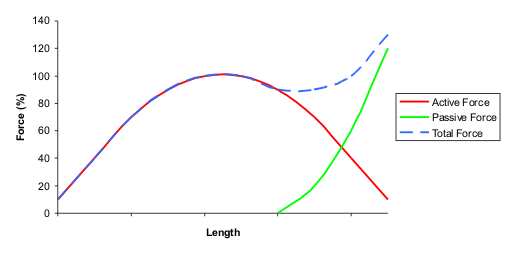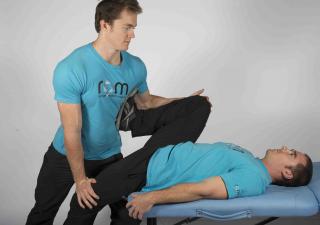Proprioceptive Neuromuscular Faciliation is a method of increase muscle length and the range over which force can be applied. PNF has the potential to give you:
- More strength – without having to make your muscles stronger,
- More speed – without having to make your muscles faster, and
- More flexibility – without the need for inefficient (though widely performed) static stretching.
It achieves these outcomes by increasing the range of motion through which you can apply force.
So potent is PNF in improving these performance qualities, that this post will form two parts.
- In this first post we will cover the mechanics of muscle and how the length and strength of a muscle are related.
- The second will deal with how to perform PNF stretching to maximise performance.
Basically, PNF is a method of increasing flexibility – the ‘stretchy-ness’ of a muscle. Not just flexibility, but useful flexibility.
To understand this you need to understand the relationship between the length of a muscle and the amount of tension (which for our purposes we will use interchangeably with ‘strength’) it can produce. This is termed the ‘length-tension relationship’.
To better understand this, find yourself a subject.
- Ask your subject human to stand with their hands by their sides, arms straight and palms facing forwards.
- Grasp their wrist and instruct them to try and curl their arm upwards (like a bicep curl) while you resist. Take note of the force produced.
- Ask them to bend their arm so the palm is almost touching the shoulder. Their elbow should remain at their side. Once again, grasp their wrist and take note of the force they can produce.
- Repeat this once more with the elbow bent to 95 degrees.
What you should find is that your subject is able to generate substantially more force when their arm is bent to 90 degrees than at the two extremes (more straight/extended and more bent/flexed). This is exactly what the length-tension relationship tells use. A muscle is strongest when it’s not too stretched (arm straight) and not too shortened (arm bent). A physiological Goldilocks effect. Just right.
This relationship is shown graphically in the length-tension curve below.

Again, what this shows is that the muscle can generate the most tension (strength) at the midpoint of its range. So how can we use PNF stretching to modify the length-tension curve for our muscles to maximise the strength, speed and flexibility?
The answer is simple. By widening the curve. Why? Because if the curve is fat at its extremities, we are able to produce the maximum amount of force – not only when the muscle is at its midpoint – but also at the extremes of range.
Let me give you an example.
Athlete ‘A’ has tight shoulders. They can reach their arms overhead – but only just. Athlete ‘B’ has flexible shoulders, they can maintain an overhead position no problem. If you measured the electrical impulses in their muscles (a worthless though oft undertaken laboratory procedure) you would find that they are both equally ‘strong’ (note inverted commas). However, Athlete ‘A’ (tight overhead) is at the far corner of their length-tension curve. Their muscles are at such an extreme of length that their ability to produce tension (strength) is chronically impaired. To borrow a commonly used analogy, they have the engine of a Ferrari… but the handbrake is on. The potential is there, the brake needs to be release. Athlete ‘B’ on the other hand, is sitting right in the middle of a nice plump length-tension curve. They are able to produce maximum force because their muscles are sitting right in that physiological sweet spot.
How do we release the handbrake? PNF. Proprioceptive Neuromuscular Facilitation. How do we do that? Learn about how to implement these technqiues here.





